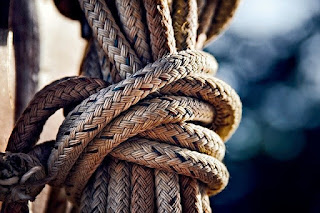SYNTHETIC FIBERS AND PLASTICS- IMPORTANT TOPICS
 |
| beads on chain |
CHARACTERISTICS OF SYNTHETIC FIBRES
Fabrics made up of synthetic fibers are very popular. They are durable, less expensive, and can be easily maintained. They dry up quickly and are wrinkle-free. The color of synthetic fabrics will not fade.
TYPES OF SYNTHETIC FIBRES
RAYON
- Rayon is a synthetic fiber having properties similar to that of silk. Hence it is called artificial silk.
- On the chemical treatment of wood pulp, we can obtain a rayon.
- It is cheaper than silk and can be dyed in a variety of colors.
- When rayon is mixed with cotton, we can make bed sheets.
- When it is mixed with wool, we can make carpets.
 |
| rayon mat |
NYLON
Nylon is prepared from coal, water, and air. Nylon fibers are elastic, strong, and light. It is lustrous and can be washed easily. It dries up fast.
So it is popular in making clothes, socks, tents, toothbrush bristles, seat belts, curtains, etc. Since it is strong and durable, it is widely used for making rock climbing ropes and parachutes.
 |
| parachute nylon |
 |
| nylon rope |
 |
| nylon socks |
 |
| toothbrush bristles nylon |
POLYESTER
Polyester is made up of repeating units of ester. Terylene and Polyethylene terephthalate(PET) are very familiar polyesters used by us.
Terylene can be woven like any other yarn. It does not get wrinkled easily and is easy to wash. Polycot, poly-wool, and terry cot are some of the fabrics made by mixing with cotton and wool.
poly cot- polyester+cotton
poly wool-polyester+wool
 |
| polyester shirt |
 |
| PET container |
ACRYLIC
 |
| Acrylic toy |
 |
| acrylic blanket |
BURNING TEST OF FIBRES
When you burn a synthetic fiber, it melts. But on burning a natural fiber like cotton, it forms ash. If synthetic clothes catch fire, it can be disastrous as it melts and sticks to the body. So it is not advisable to wear synthetic clothes in the kitchen and laboratory.
PLASTICS
Plastics are also polymers in which the repeating units are arranged in the linear or cross-linked pattern. The main advantage of plastic is that it can be recycled and reused. It can be remolded into different shapes and colors.
Plastics can be classified into two.
Thermoplastics and Thermosetting plastics
THERMOPLASTICS
 |
| PVC toy |
 |
| PVC pipe |
THERMOSETTING PLASTICS
Plastic which when molded once, can not be softened on heating is called thermosetting plastic. This kind of plastic will get hardened on heating. Hence it can not be recycled or reused.
Example- Bakelite and Melamine
 |
| old phone bakelite |
 |
| switches bakelite |
 |
| melamine utensils |
Melamine is used for making kitchenware, floor tiles, and fire-resistant fabrics. It can resist heat better than other kinds of plastics.
CHARACTERISTIC PROPERTIES OF PLASTICS
Plastics are non-reactive- plastics do not react with air or water and are not corroded easily.
Plastics are strong, durable, and light- since they have these properties, they can be molded into various shapes and sizes.
Plastics are poor conductors of heat and electricity- since they have these properties, it is widely used as a covering for electrical wires and handles of testers and screwdrivers. Handles of kitchen wares are made up of thermosetting plastics as it is a poor conductor of heat.
PLASTICS AND THE ENVIRONMENT
.






No comments:
Post a Comment